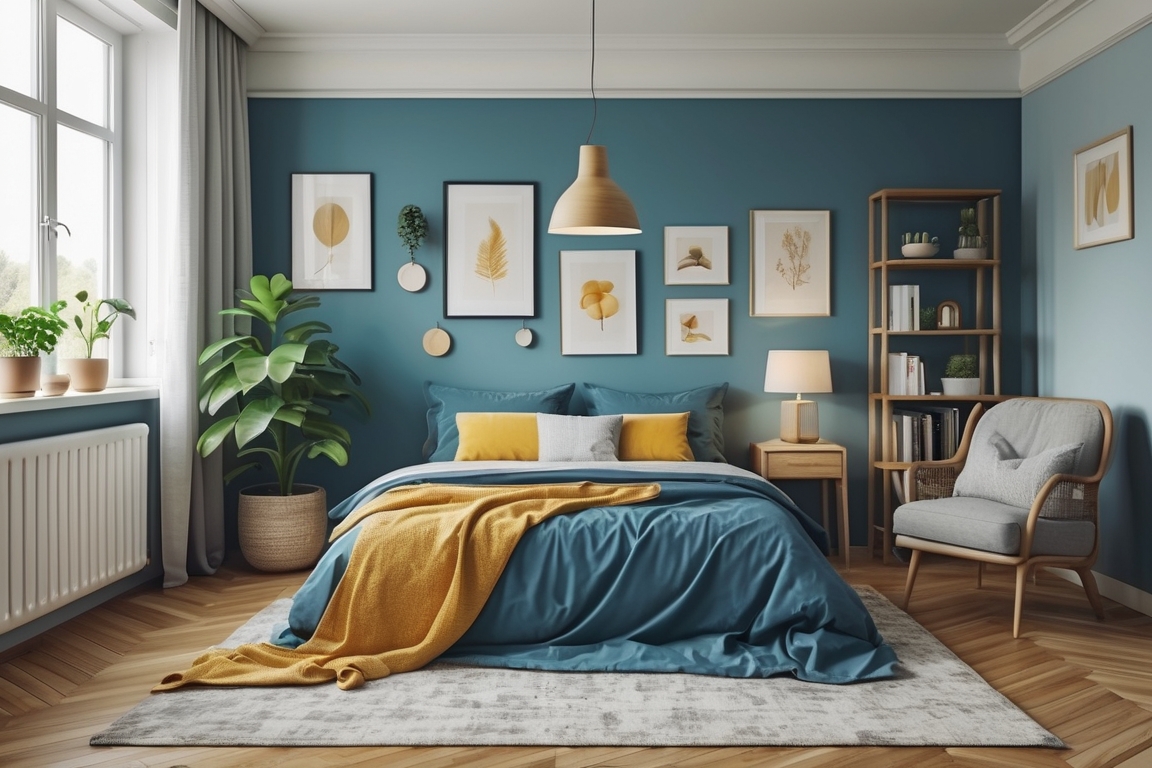When we think of our homes, we often imagine safety, comfort, and shelter — our personal haven from the chaos of the outside world. But what if the very place you associate with wellness is quietly undermining your health? From indoor air pollution to unseen toxins in furniture and mold creeping behind walls, your home could be exposing you to risks that impact everything from your respiratory system to your hormones.
Here’s a practical guide to the hidden health hazards inside your home — and what you can do to identify and eliminate them.
1. Indoor Air Pollution: The Invisible Threat
Many people assume that air pollution is only an outdoor problem, but the air inside your home can be 2 to 5 times more polluted than outdoor air, according to the EPA.
Common indoor pollutants include:
- Volatile Organic Compounds (VOCs) from paints, cleaning supplies, and air fresheners
- Smoke from candles, cooking, or fireplaces
- Dust, dander, and pollen buildup
- Carbon monoxide from poorly ventilated appliances
Fix it:
- Use an air purifier with a HEPA filter to trap dust and allergens.
- Open windows regularly to improve ventilation.
- Choose low-VOC or no-VOC paints and cleaning products.
- Install carbon monoxide detectors and service your HVAC system annually.
2. Mold and Mildew: The Silent Saboteurs
Mold thrives in damp, dark environments — bathrooms, basements, behind drywall, or under sinks. Long-term mold exposure can cause:
- Allergic reactions
- Asthma flare-ups
- Chronic sinus issues
- Fatigue and headaches
Black mold (Stachybotrys chartarum) in particular has been linked to more serious respiratory and neurological symptoms.
Fix it:
- Use dehumidifiers in moisture-prone areas to keep humidity below 50%.
- Repair leaks immediately — water damage is mold’s best friend.
- Use mold-resistant products when renovating (like drywall and paint).
- For visible mold, clean with vinegar or a mold-specific cleaner, and call a professional for large infestations.
3. Endocrine Disruptors: Hidden in Plastics and Furniture
You may have heard of BPA in plastics, but that’s just the tip of the iceberg. Many household items contain chemicals that can interfere with your hormones (endocrine disruptors), such as:
- Phthalates in vinyl flooring, air fresheners, and personal care products
- Flame retardants in sofas, mattresses, and electronics
- Per- and polyfluoroalkyl substances (PFAS) in non-stick cookware and stain-resistant fabrics
These chemicals have been linked to reproductive issues, thyroid problems, obesity, and certain cancers.
Fix it:
- Avoid heating food in plastic containers — use glass or stainless steel instead.
- Choose “phthalate-free” and “BPA-free” labels when possible.
- Look for certified flame-retardant-free furniture and baby products.
- Switch to cast iron or ceramic cookware instead of Teflon.
4. Drinking Water Contaminants: More Than Just Lead
Old plumbing, industrial waste, or pesticide runoff can taint your tap water with harmful substances — lead, chlorine, pesticides, and microplastics among them.
Fix it:
- Use a certified water filter that fits your needs (pitcher, faucet-mounted, or whole-house).
- Check your local water quality report — many municipalities post annual results.
- Flush old pipes by letting water run cold for a minute before drinking or cooking.
5. Noise Pollution: The Invisible Stressor
Noise from traffic, appliances, or even constant background TV can increase stress levels, disrupt sleep, and raise blood pressure — even if you’re not fully aware of it.
Fix it:
- Use white noise machines or noise-canceling headphones.
- Hang thick curtains and use rugs to absorb sound.
- Create a quiet “wind-down zone” in your home where electronics and loud sounds are minimized.
6. Lighting and Sleep Disruption
Your home’s lighting — especially at night — can mess with your body’s circadian rhythm. Blue light from phones, computers, and energy-efficient bulbs suppresses melatonin, the hormone that helps you sleep.
Fix it:
- Use dim, warm-toned lighting in the evening.
- Avoid screens an hour before bed or use blue light filters.
- Let in natural light during the day to keep your sleep cycle on track.
Final Thoughts: Creating a Healthier Home
Your home should be a place that nurtures your well-being — not silently chips away at it. The good news? You don’t need to overhaul everything at once. Start with one small change, like switching to a safer cleaning product or checking for mold in your bathroom, and build from there.
By being aware of these hidden hazards and taking simple, proactive steps, you can create a living space that truly supports your health — one breath, sip, and step at a time.





